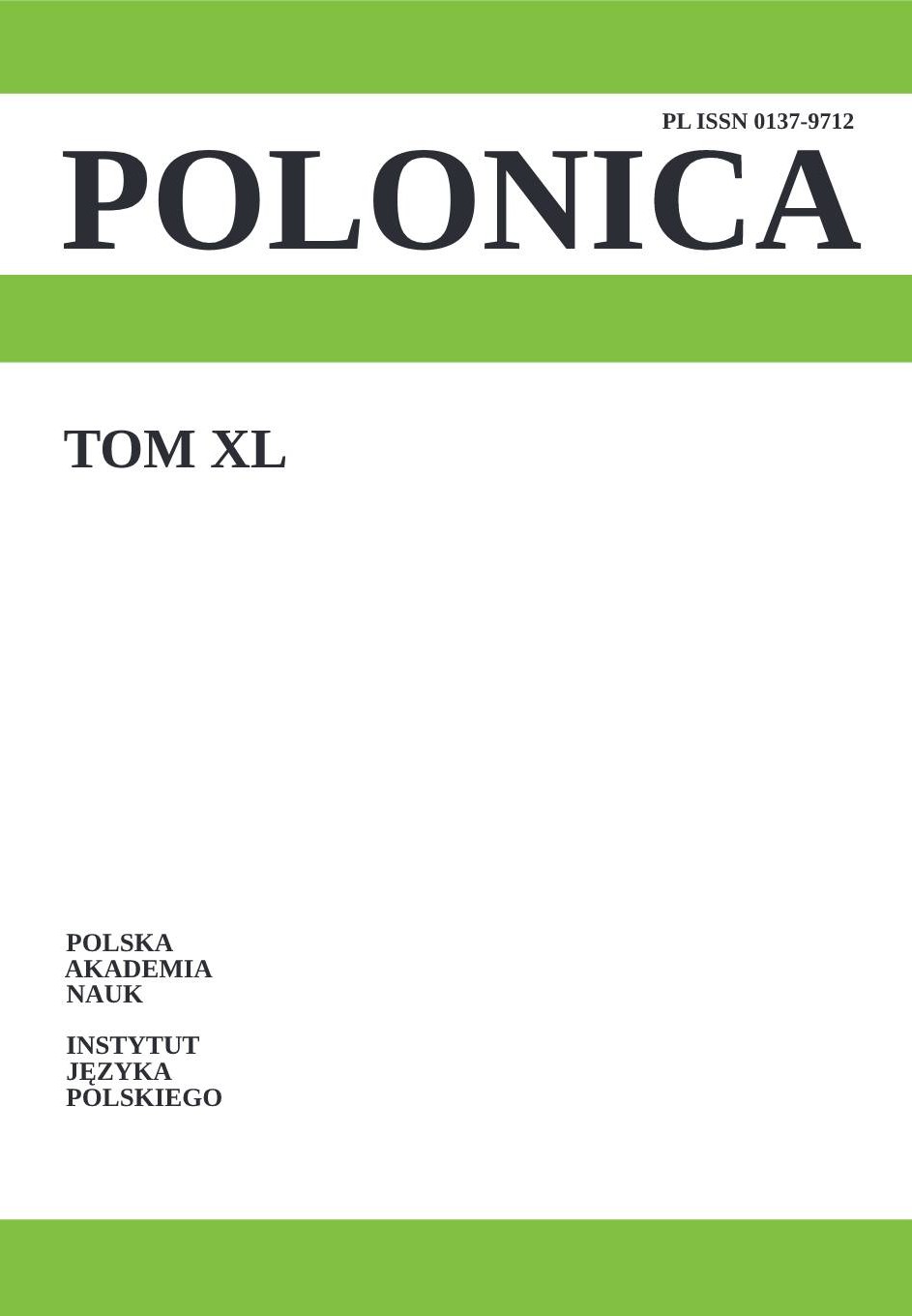Abstract
The article presents an analysis of lexical data obtained by a free word association experiment in two studies separated by 50 years (Kurcz 1967, Gatkowska 2017: 1000 and 900 subjects respectively). Comparative analysis was used to analyze the names of colors (white, yellow, black, red, blue and green) and their experimental connotations. The gap of 50 years revealed the stability of meanings (semantic connotations) resulting from the fact that a given color is an inherent feature (e.g. white – snow), as well as stability of conventions (e.g. white – purity, innocence) and the simultaneous variability of extra-linguistic facts, e.g. the numerous lexical connotations of red in the Kurcz study, motivated by the political situation of Poland at the time, that are not present in the contemporary experiment, or new color connotations ( e.g. black – elegant, green – money). In both experiments one can see the use of metonymy to connect a color name and a person.
References
Berlin, B., Kay, P. (1969). Basic Color Terms: Their Universality and Evolution. Berkeley: University of California Press.
Church, K.W., Hanks, P. (1990). Word Association Norms, Mutual Information, and Lexicography, Computational Linguistics, 16(1), s. 22–29.
Clark, H.H. (1970).Word Associations and Linguistic Theory. W: J. Lyons (red.), New Horizon in Linguistics (s. 271–286). Middlesex: Penguin Books Ltd, Harmondsworth.
Deese, J. (1965). The Structure of Associations in Language and Thought. Baltimore: Johns Hopkins University Press.
Gatkowska, I. (2017). Eksperymentalna sieć leksykalna języka polskiego. Kraków: Wydawnictwo Uniwersytetu Jagiellońskiego.
Jurek, K. (2011). Znaczenie symboliczne i funkcje koloru w kulturze. Kultura, Media, Teologia, 6, s. 68–80.
Kent, G.H., Rosanoff, A.J. (1910). A study of association in insanity. American Journal of Insanity, 67, s. 37–96, 317–390.
Korzycki, M., Gatkowska, I., Lubaszewski, W. (2017). Can Human Association Norm Evaluate Machine-Made Association Lists. W: B. Sharp, F. Sedes, W. Lubaszewski (red.), Cognitive Approach to Natural Language Processing (s. 21–40). London–Oxford: ISTE/ Elsevier.
Kurcz, I. (1967). Polskie normy skojarzeń swobodnych na 100 słów z listy Kent – Rosanoffa. Studia Psychologiczne, VIII, s. 122–255.
Lubaszewski, W., Gatkowska, I. (2013). Struktura semantyczna języka naturalnego. W: I. Gatkowska, W. Lubaszewski (red.), Interfejs dla osób z dysfunkcją wzroku. Model kognitywny i przykład dobrej praktyki (s. 47–106). Kraków: Wydawnictwo Uniwersytetu Jagiellońskiego.
Lyons, J.L. (1968). Introduction to Theorethical Linguistics. Cambridge: Cambridge University Press.
Lyons, J. (red.) (1970). New Horizon in Linguistics. Middlesex: Penguin Books Ltd, Harmondsworth.
Nęcki, Z., Sowa, I., Rosiński, J. (1999). Psychologia reklamy. W: A.S. Barczak, A. Pitrus (red.), Ze świata reklamy. Kraków: Wydawnictwo Uniwersytetu Jagiellońskiego.
Rapp, R. (2002). The Computation of Word Associations: Comparing Syntagmatic and Paradigmatic Approaches. Proceedings of the 19th International Conference on Computational Linguistics, Taipei, vol. 1 (s. 1–7). Stroudsburg: Association for Computational Linguistics.
Saunders, B., Brakel, J. (2002). The Trajectory of Color. Perspectives on Science, 10 (3), s. 302–355. Pobrane z https://www.muse.jhu.edu/article/43328 (20.03.20).
Sharp, B., Sedes, F., Lubaszewski, W. (red.) (2017). Cognitive Approach to Natural Language Processing. London–Oxford: ISTE/ Elsevier.
Tokarski, R. (2004). Semantyka barw we współczesnej polszczyźnie. Lublin: Wydawnictwo UMCS.
Wierzbicka, A. (1999). Znaczenie nazw kolorów i uniwersalia widzenia. W: A. Wierzbicka, Język – umysł – kultura, wybór prac pod red. J. Bartmińskiego (s. 405–449). Warszawa: Wydawnictwo Naukowe PWN.
Wierzbicka, A. (2011). Uniwersalia ugruntowane empirycznie. Teksty Drugie, 1/2, s. 13–30.
Źródło elektroniczne
https://pieknoumyslu.com/psychologia-koloru-wplyw/ (dostęp: 20.03.20).
